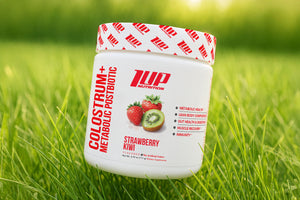Easy, sustainable weight loss -- that is the holy grail that so many individuals seek, yet never seem to find.
They hop from one fad diet to another and then make a skip and jump from one wacky exercise plan to three others in the span of a month and they wonder why they achieve the same results as the thousands of people who enter our transformation challenges.
Well, if you’ve experienced these same struggles, we’ve got good news!
We’re going to give you three easy steps to achieve lasting weight loss.
Follow these three simple things, and you will get results!
3 Keys to Lasting Weight Loss
#1 Slow & Steady Wins the Race
Haste is your enemy in the world of fitness.
Whether it be trying to build muscle or lose fat, trying to do too much too fast almost always results in frustration and disappointing results.
One of the main selling points of fad diets is that they promise “rapid weight loss in X days.” What these same diets don’t tell you is that the majority of this weight is water, not fat. That’s because virtually all fad diets follow the same MO.
They severely restrict calories and eliminate carbohydrates, which causes a ton of water weight loss. However, this draconian approach to dieting is unsustainable (not to mention unnecessary).
If there’s one thing that’s certain when it comes to weight loss, is that for long-term weight loss success, the approach has to be sustainable, which means an individual has to be able to adhere to it for the long-term.
That’s why we advocate taking a steady, measured approach to weight loss.
Sure, you won’t lose 15 pounds in 5 days, but the weight loss success you experience will last, provided you use an approach that fits your lifestyle.
Remember, you’re entering this fitness lifestyle for the long haul.
A steady and sustainable rate of weight loss is 0.7-1% per week.
For a 180-lb individual, this equates to between 1.26-1.8 lbs per week.
The other important benefit of slower, steadier weight loss is that there is considerably less risk for muscle loss.
#2 Consume a High-Protein Diet
Regardless if your goal is muscle gain or fat loss, consuming enough dietary protein is critical to your success.
The reason for this is that protein supplies the body with the amino acids it needs (including EAA/BCAA) to build and repair muscle tissue, synthesize hormones, and support the structural components of your body (joints, ligaments, bones, tendons, etc.).
Furthermore, any time you diet, you place your body in an energy deficit (calories in < calories out).
This significantly increases the likelihood for muscle breakdown since muscle is energy intensive for the body to hold on to. Since it’s lacking energy, the body will consider breaking down those more expensive tissues in order to conserve energy.
By consuming enough dietary protein, you help protect against protein breakdown, and thus encouraging your body to only lose fat, not muscle.
A good rule of thumb for protein intake is 1 gram per pound of body weight. So if you weigh 180 lbs, you would consume 180 grams of protein per day.
The other important benefit of consuming a high protein diet is that protein is the most satiating macronutrient. As you know, dieting invariably increases feelings of hunger.
Consuming a high protein diet can help keep hunger at bay and increase the number of calories you’re burning each day, since protein requires a lot of energy to break down compared to carbohydrate or fat.
#3 Perform Resistance Training
As we mentioned, anytime you diet, you place your muscles at an increased risk of break down. Consuming enough protein each day and taking a more measured rate of weight loss each week will go a long way towards you not losing any muscle during your diet.
But, there’s one other very important thing you need to do each week -- resistance training.
Resistance training provides an incredibly powerful stimulus to your body that tells it to hold into all of its muscle.
How many resistance training sessions should you perform each week?
3-4 sessions per week is more than enough, provided you’re training with a high degree of intensity and using good exercises that stimulate a lot of muscle tissue (squats, bench press, deadlifts, rows, etc.).






